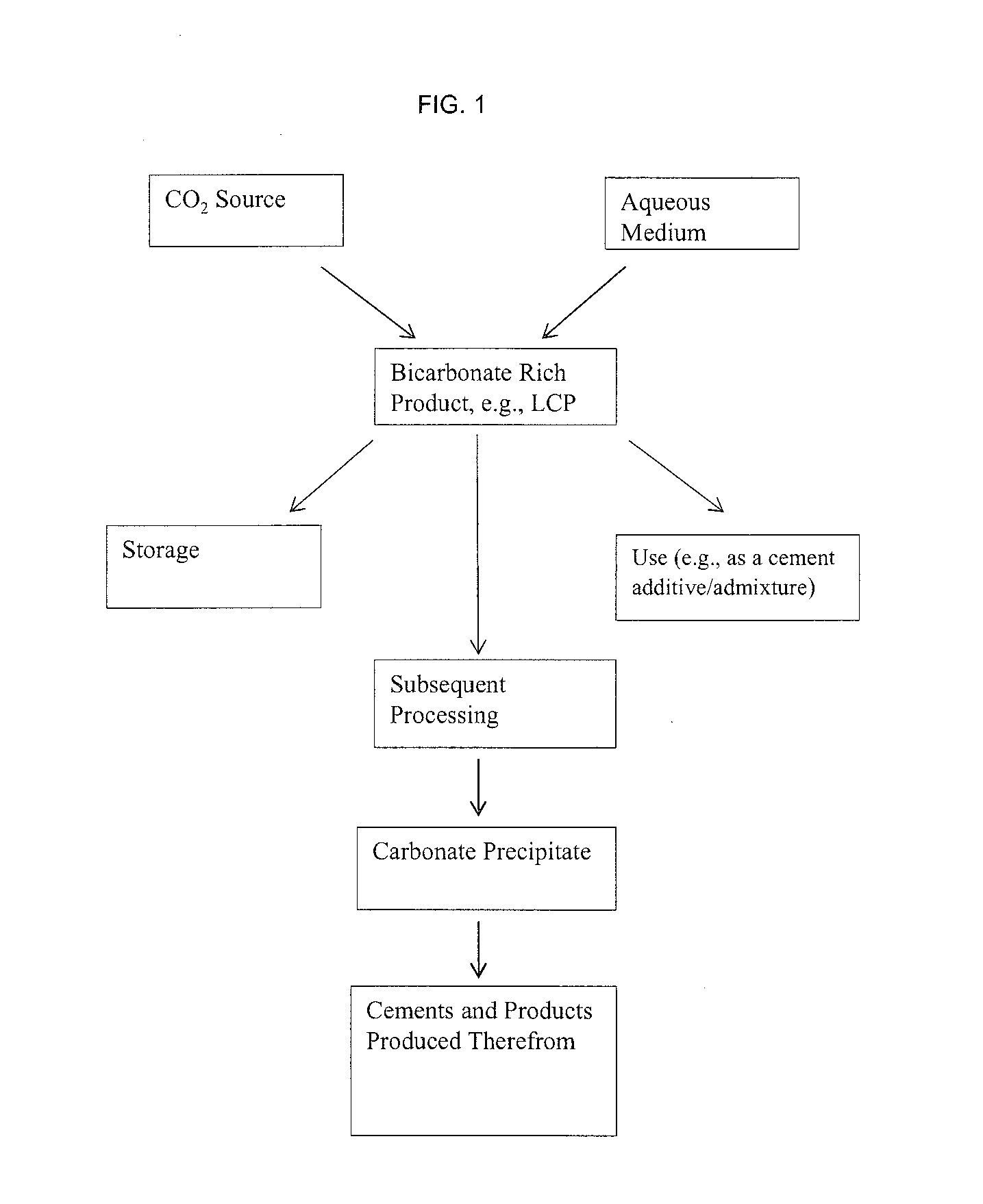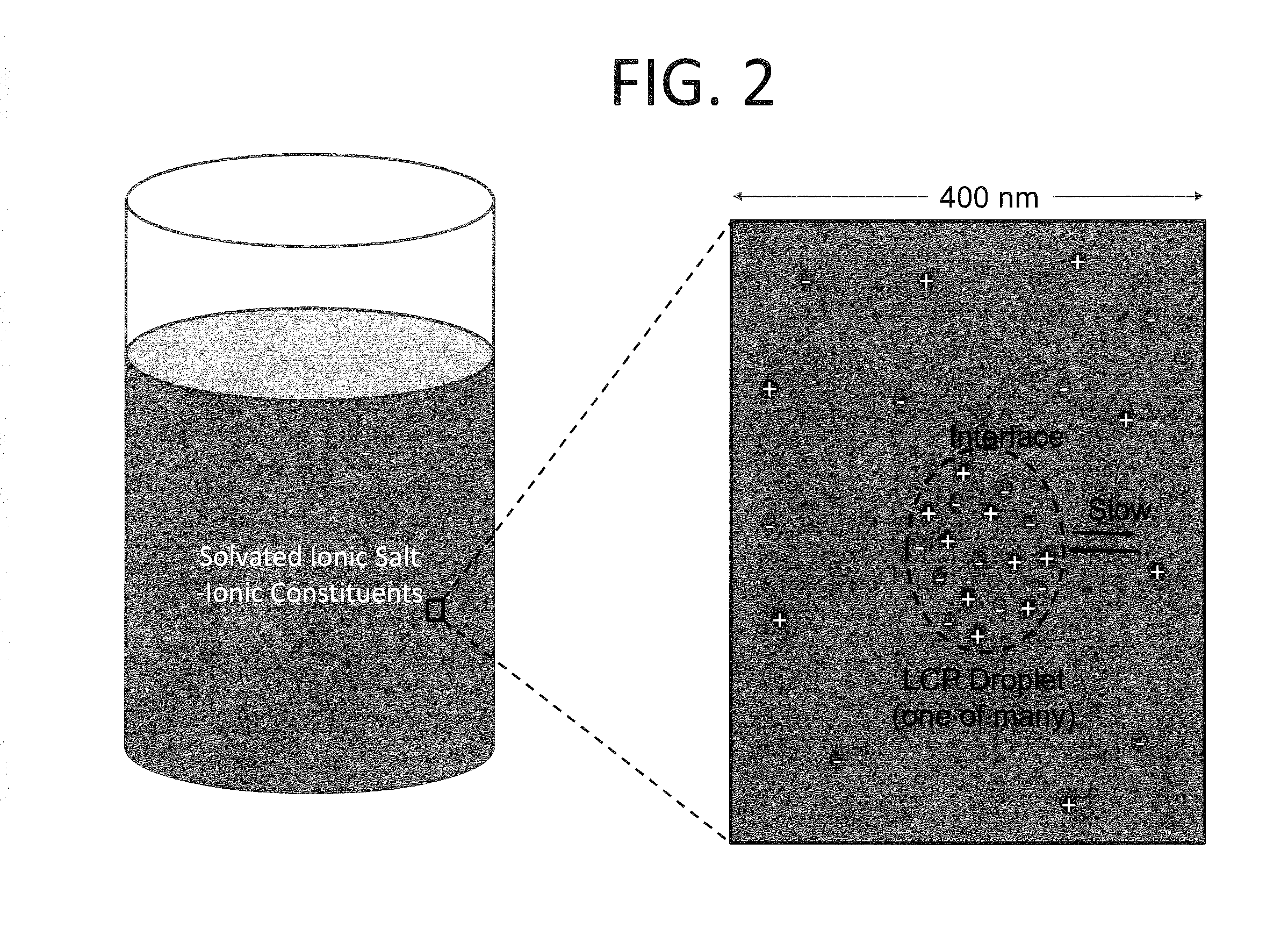Carbon Sequestration Methods and Systems, and Compositions Produced Thereby
a technology of carbon sequestration and carbon dioxide, applied in the direction of biomass after-treatment, machine/engine, solid waste management, etc., can solve the problems of limited volume potential, limited method applicability, and high cost, and achieve the effect of reducing the requirement of two words of alkalinity
- Summary
- Abstract
- Description
- Claims
- Application Information
AI Technical Summary
Benefits of technology
Problems solved by technology
Method used
Image
Examples
example a
Preparation of a CO2 Sequestering Cement Additive from a High Early-Strength (Type C, Type E), Superplasticizing (Type A, Type F) Commercial Admixture
[0277]A CO2 sequestering cement additive, A1, is prepared with a commercial admixture that is composed of polycarboxylate (15-40 wt %), sodium thiocyanate (1540 wt %), N,N,N′,N′-tetrakis(2-hydroxyethyl)ethylenediamine (5-10 wt %), triethanolamine (1-5 wt %) and water. The concentrated admixture is diluted to an appropriate volume with aqueous medium (e.g. 0.02 L admixture in 1.0 L water) to obtain the recommended dilution appropriate to produce a settable cementitious composition. A CO2-containing gas is then dissolved into the solution to form a BRLCP component, of which, the amount of dissolved inorganic carbon (DIC) in solution is quantified with a UIC CM150 series carbon analyzer. The data are summarized in FIG. 12 and Table 1. For this example, A1 demonstrates a 650% increase in DIC upon treatment with a CO2-containing gas, compar...
example b
Preparation of a CO2 Sequestering Cement Additive from a Water-Reducing Accelerator (Type C, Type E) Commercial Admixture
[0279]A CO2 sequestering cement additive, A2, is prepared with a commercial admixture that is composed of calcium nitrate (15-40 w %), sodium thiocyanate (10-30 wt %), diethanolamine (10-30 wt %), triethanolamine (3-7 wt %) and water. The concentrated admixture is diluted to an appropriate volume with aqueous medium (e.g. 0.06 L admixture in 1.0 L water) to obtain the recommended dilution appropriate to produce a settable cementitious composition. A CO2-containing gas is then dissolved into the solution to form a BRLCP component, of which, the amount of DIC in solution is quantified with a UIC CM150 series carbon analyzer. The data are summarized in FIG. 12 and Table 1. For this example, A2 demonstrates a 2,670% increase in DIC upon treatment with a CO2-containing gas, compared to the A2 control, which is not treated with a CO2-containing gas. The CO2 sequestering...
example c
Preparation of Mortar Cubes Using CO2 Sequestering Cement Additive
[0280]Mortar cubes are made by mixing mortar with CO2 sequestering cement additive in the ratio of 0.138 parts (e.g. 0.138 L A1 per kg mortar) in an attempt to adhere to ASTM C109 standard. Control cubes are made with mixing water that has not been exposed to a CO2-containing gas prior to mixing with mortar. The 3- and 7-day strength tests for the series of mortar cubes made in this example are shown in FIG. 13. For each set of cubes, the cubes that were made by mixing with CO2 sequestering cement additive show higher compressive strength for both the 3-, 7- and 28-day tests. As can be seen in the results, higher compressive strength is achieved with admixtures that include a CO2 sequestering component.
PUM
| Property | Measurement | Unit |
|---|---|---|
| temperature | aaaaa | aaaaa |
| temperature | aaaaa | aaaaa |
| temperature | aaaaa | aaaaa |
Abstract
Description
Claims
Application Information
 Login to View More
Login to View More - R&D
- Intellectual Property
- Life Sciences
- Materials
- Tech Scout
- Unparalleled Data Quality
- Higher Quality Content
- 60% Fewer Hallucinations
Browse by: Latest US Patents, China's latest patents, Technical Efficacy Thesaurus, Application Domain, Technology Topic, Popular Technical Reports.
© 2025 PatSnap. All rights reserved.Legal|Privacy policy|Modern Slavery Act Transparency Statement|Sitemap|About US| Contact US: help@patsnap.com



